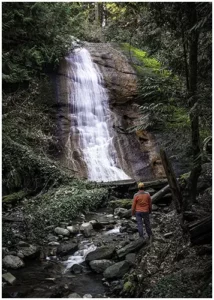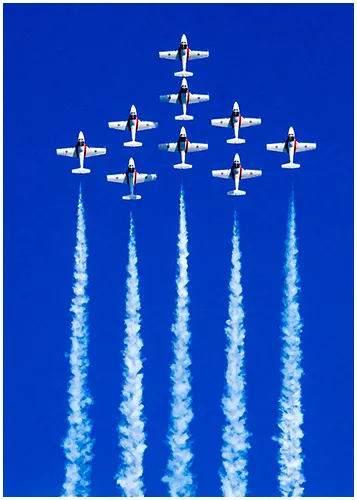
The Charming Northfield Falls in the Heart of Beach Estate Park
Looking to kill off an hour while in Nanaimo, BC? Just a short hop-skip and


Have you ever looked at a photograph and wondered why it just didn’t feel right? Or maybe you’ve taken a shot that lacked that wow factor. In this article, we’re diving into the world of photography composition with the “Rule of Odds.” This magical rule involves using an odd number of elements in your frame to create visually stunning and balanced compositions. Whether you’re a seasoned photographer or just starting your journey, understanding and using the rule of odds can transform your photography.
One important composition technique to learn is the Photography Rule of Odds. This is where odd numbers of subjects result in a more balanced and pleasing visual arrangement compared to even numbers. In this article, we will dive into what the Rule of Odds in photography is and how you can use it to take your photography skills to the next level.
One of the most critical photography composition tips to master is the rule of odds. This rule states that an odd number of subjects in your photograph creates a more pleasing and balanced visual arrangement compared to an even number.
For instance, if you are taking a photograph of a group of people, try to avoid having an even number of people. Instead, take advantage of the rule and aim for three, five, or seven individuals to create a more pleasing image.
The rule of odds is related to another essential composition tip known as the rule of thirds. The rule of thirds suggests dividing your photograph into thirds both horizontally and vertically, creating nine equally sized sections. Positioning the main subjects in the frame at the intersection points or along the lines can make your photographs more balanced and engaging.
The Rule of Odds suggests having an odd number of subjects in your photograph creates a more pleasing and balanced visual arrangement.
Anonymous
Now that we’ve covered the basics of the Rule of Odds, let’s explore some practical techniques and examples of how to apply this composition rule to your photography.
Nature’s beauty is vast and varied, but with the help of the Rule of Odds composition technique, you can capture it like a pro. The rule of odds states that, rather than an even number of objects, using an odd number, like three or five, creates better composition in your shots. When you’re photographing the wonders of the natural world, follow the rule of odds to guide the viewer’s eye and take advantage of the mesmerizing balance it brings to your images. Stay with me for some valuable composition tips and discover the magic behind the rule of odds in nature photography.
In landscape photography, the Rule of Odds can be used to create a strong focal point and lead the viewer’s eye deeper into the composition.
When photographing people, the Rule of Odds can help balance poses and groupings of subjects. For example, where possible in a family portrait, posing three people instead of two can create a more natural and harmonious arrangement: Also posing the family in groups of three will create a more pleasing photo. Ask yourself what would Annie Leibovitz do?
Street photography is where the urban canvas becomes your playground, and the Rule of Odds is your secret weapon. Imagine a street vendor amidst a sea of people, a musician strumming their guitar with a trio of onlookers, or a solitary figure silhouetted against a busy crosswalk. these are moments where the Rule of Odds makes your shots pop. By using an odd number of subjects, like one, three, or five, you’re creating compositions that draw viewers into the narrative of your photo.
In street photography, the Rule of Odds can be used to capture intimate and candid moments between people. For instance, photographing three people walking or conversing can create a sense of connection and interaction, as shown in the example below:
Even in food and still life photography, the Rule of Odds can create more harmonious and balanced arrangements. For example, photographing an odd number of objects or dishes can create a sense of variety and interest.
It’s important to experiment with the Rule of Odds and how it can enhance your compositions. By using odd numbers, you can create strong focal points, balance poses and groupings, capture intimate moments, and create more harmonious arrangements. Keep in mind that the Rule of Odds is just one composition rule to consider, along with other guidelines like the rule of thirds and leading lines. With practice and experimentation, you can improve your composition skills and create more striking and memorable photographs.
Although the Rule of Odds is a helpful guideline for creating visually pleasing compositions, there are exceptions to consider. In certain situations, an even number of subjects or elements can still result in a compelling photograph.
Brace yourself we’re about to flip the script. While the Rule of Odds is a go-to technique for creating balanced compositions, there are times when breaking this rule can lead to spectacular results.
Pros of Breaking the Rule of Odds:
Cons of Breaking the Rule of Odds:
Remember, photography is an art, and there are exceptions to every rule. Knowing when to break the Rule of Odds can open up new creative possibilities and add diversity to your portfolio. So, next time you’re framing your shot, consider whether an odd number might just be the perfect twist for your composition.
In wildlife photography, it can be challenging to capture an odd number of animals in a single frame. Sometimes, the subject itself may be better suited to an even number composition. For example, a pair of birds perched on a branch may create a balanced and pleasing image. In such situations, focusing on the symmetry of the subjects can lead to an engaging composition, even with an odd number of elements.
When photographing people, certain poses or groupings may lend themselves better to even numbers. For instance, a group of four individuals can be arranged in a way that creates a balanced and visually appealing photograph. Alternatively, adding an odd one out to a group can add an element of interest and create a sense of mystery or intrigue.
In bird photography, capturing an odd number of birds in flight can be challenging. However, this does not mean that even-numbered compositions are less effective. Sometimes, capturing symmetry in bird formations can create a visually striking image. For example, a V-formation of geese in flight can create a sense of movement and direction, with an even number of birds.
In summary, mastering the Photography Rule of Odds can greatly improve your composition skills. By applying this technique, you can create visually appealing photographs that capture the attention of viewers. Remember, the Rule of Odds states that an odd number of subjects in your composition creates a more balanced and pleasing arrangement. To improve your composition skills, consider incorporating other related composition tips, such as the rule of thirds, into your photography. Experiment with applying the Rule of Odds in various genres, such as landscape, portrait, street photography, or even still life and food photography, to find what works best for you. Although there may be exceptions to the Rule of Odds, understanding this foundational composition rule can help guide your decisions as a photographer and lead to more impactful photographs. So go ahead, try it out and see the difference it can make in your photography!
The Photography Rule of Odds states that an odd number of subjects in your composition creates a better visual arrangement compared to an even number. It helps to create balance and interest in your photographs.
To apply the Rule of Odds, try to include an odd number of subjects or elements in your composition. This can be achieved by adding or removing elements from your scene or adjusting your framing. Experiment with different arrangements until you achieve a visually appealing and balanced composition.
No, the Rule of Odds can be applied to various genres of photography, including landscapes, portraits, street photography, food, and still life photography. It helps to create visual interest and guide the viewer’s eye towards a focal point or subject of interest.
While the Rule of Odds generally holds true, there are exceptions to consider. In certain scenarios, an even number of subjects or elements may still result in a compelling composition. Additionally, some genres of photography, such as wildlife photography or bird photography, may have their own rules and guidelines when it comes to odd or even numbers of subjects.
Mastering the Rule of Odds can improve your composition skills and enhance the visual impact of your photographs. By creating visually appealing and balanced compositions, you can capture the attention of viewers and create images that leave a lasting impression.

Looking to kill off an hour while in Nanaimo, BC? Just a short hop-skip and

Photography can be a fulfilling and enjoyable hobby that brings a creative outlet to your

Welcome to our guide to Photoshop tutorials for beginners: A Complete Beginner’s Tutorial for Learning